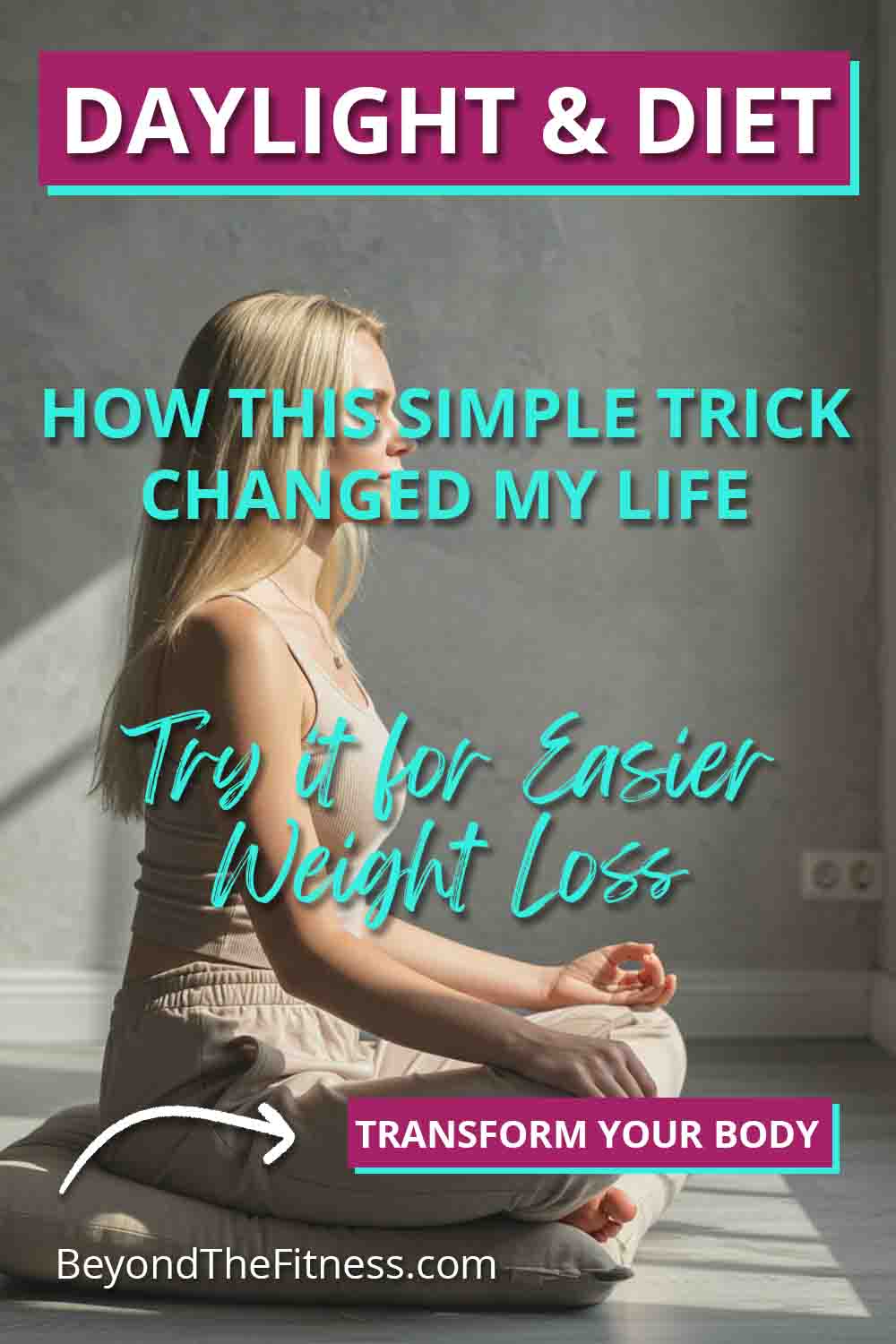Have you ever noticed how nature seems to run on a schedule? The sun rises, birds start singing, flowers open up, and then as the sun sets, things quiet down. Our bodies have their own internal clocks too, deeply connected to this cycle of light and darkness. This connection is the idea behind something called photoperiodic fasting. It sounds fancy, but it just means eating in a way that matches the length of daylight.
I find this fascinating because it feels like a more natural way to approach eating patterns compared to some strict, fixed schedules. It’s about working with our body’s built-in rhythms, which might be helpful for things like managing weight and feeling more energetic, especially for us women whose bodies are already finely tuned to various cycles.
What Exactly is Photoperiodic Fasting?
Let’s break down the term. “Photo” means light, and “period” refers to a length of time. So, “photoperiod” is simply the amount of time there’s daylight in a 24-hour cycle. Photoperiodic fasting means adjusting your eating window—the time you allow yourself to eat each day—based on the available daylight.
Think about the seasons. In the summer, the days are long. You might wake up early with the sun and find it’s still light out late into the evening. Following a photoperiodic pattern, your eating window might naturally be longer during these months. You might have breakfast shortly after sunrise and finish your dinner while it’s still light or just around sunset.
In contrast, winter brings shorter days. The sun rises later and sets much earlier. With photoperiodic fasting, your eating window would naturally shrink. You might start eating a bit later in the morning and finish your last meal much earlier in the evening, closer to when darkness falls.
This is quite different from popular intermittent fasting methods like the 16/8 schedule (where you fast for 16 hours and eat within an 8-hour window every day) or the 5:2 diet (eating normally for five days and restricting calories significantly for two days). Those methods use fixed schedules. Photoperiodic fasting is dynamic; it flows and changes with the seasons, just like nature does. It’s less about watching the clock for a specific hour and more about observing the natural light cues around you.
The Science: Why Light and Eating Times Matter
Our bodies have an internal master clock located in our brain, specifically in an area called the suprachiasmatic nucleus (SCN). This clock runs on a roughly 24-hour cycle and is known as our circadian rhythm. Think of it as the conductor of an orchestra, keeping all our bodily functions playing in harmony.
The most powerful signal that sets this internal clock is light. When light enters our eyes, especially morning light, it signals to the SCN that it’s daytime. This triggers a cascade of events:
- Cortisol Rises: This hormone helps wake us up and get us going.
- Melatonin Decreases: Melatonin is the “sleep hormone.” Its production is suppressed by light.
- Body Temperature Increases: Preparing us for activity.
- Metabolism Ramps Up: Getting ready to process food for energy.
As darkness falls, the opposite happens. The absence of light signals the SCN that night is approaching:
- Melatonin Rises: Preparing the body for sleep.
- Cortisol Decreases: Allowing us to wind down.
- Body Temperature Drops Slightly: Promoting rest.
- Digestion Slows Down: The body shifts focus from digestion to repair and restoration processes that happen during sleep.
This is where eating times come in. Food is another important cue for our circadian rhythm, especially for the clocks in our organs like the liver and pancreas, which handle metabolism. Eating tells these organs it’s “active time.”
If we eat late at night, when our master clock is signaling “sleep time,” it creates a mismatch. Our digestive system isn’t primed to handle food efficiently. Our insulin sensitivity (how well our cells respond to insulin to take up sugar) tends to be lower in the evening. Consistently eating out of sync with our natural light-dark cycle can disrupt these rhythms.
This disruption, sometimes called “circadian misalignment,” has been linked to various health concerns, including:
You Might Be Interested In: Learning more about The Complete Smoothie Detox & Weight Loss Program
- Weight gain and obesity
- Metabolic syndrome (a cluster of conditions like high blood pressure, high blood sugar, unhealthy cholesterol levels)
- Type 2 diabetes
- Sleep problems
- Mood disturbances
For women, maintaining circadian harmony might be particularly important. Our hormonal systems, including the cycles governing menstruation and fertility, are interconnected with our master clock. Chronic circadian disruption (like from shift work or irregular eating patterns) has been associated with menstrual irregularities and potential fertility issues. While photoperiodic fasting isn’t a direct treatment, aligning eating patterns with natural light cycles could be one piece of the puzzle in supporting overall hormonal balance by supporting the body’s fundamental rhythms.
By eating primarily during daylight hours, photoperiodic fasting aims to align our feeding times with the periods when our body is naturally primed for activity and digestion, and allowing a longer fasting period during the dark hours when our body is geared towards rest and repair.
Putting Photoperiodic Fasting into Practice
So, how does this look day-to-day? It’s simpler than it might sound.
- Notice Sunrise and Sunset: Become aware of the natural light cycle where you live. You don’t need to be exact to the minute, but have a general sense of when it gets light and when it gets dark. Weather apps or online calendars can easily provide this information.
- Start Eating Near Sunrise: Aim to have your first meal sometime after it gets light. This doesn’t mean you have to leap out of bed and eat immediately, but avoid eating in the dark before dawn.
- Finish Eating Around Sunset: Try to have your last meal near or shortly after sunset. The goal is to avoid eating late into the night, well after darkness has fallen.
- Adapt with the Seasons: This is key.
- Summer: Longer days might mean an eating window of, say, 12-14 hours (e.g., 7 AM to 7 PM or 8 PM).
- Winter: Shorter days might mean a window of 9-11 hours (e.g., 8 AM to 5 PM or 6 PM).
- Flexibility is Okay: This isn’t about rigid rules. It’s about the general pattern. If you have a social event one evening, you adapt. The idea is to follow this pattern most of the time. It’s about aligning your usual routine with daylight.
- Listen to Your Body: Pay attention to your hunger and fullness cues. Don’t force yourself to eat if you’re not hungry just because the sun is up, and don’t starve yourself if you’re genuinely hungry near the edge of your eating window, especially when starting out.
Potential Perks, Especially for Women
Aligning our eating patterns with daylight could offer several benefits, many of which are relevant if you’re focusing on weight management and overall well-being.
- Weight Management Support:
- Reduced Late-Night Snacking: Many extra calories sneak in during the evening hours, often out of boredom or habit rather than true hunger. Eating dinner earlier and stopping naturally cuts this off.
- Improved Insulin Sensitivity: Eating earlier in the day, when our bodies are typically more sensitive to insulin, might help manage blood sugar better and potentially reduce fat storage.
- Metabolic Alignment: Eating when our metabolism is naturally more active might lead to more efficient calorie burning. Remember though, weight loss fundamentally requires a calorie deficit – burning more calories than you consume. This eating pattern might help manage the consumption side.
- Better Sleep Quality:
- Avoiding Late-Meal Indigestion: Eating heavy meals close to bedtime can cause discomfort and disrupt sleep. Finishing dinner earlier gives your digestive system time to work before you lie down.
- Supporting Melatonin Production: Eating late can sometimes interfere with the natural rise of melatonin. Aligning eating with daylight helps reinforce the body’s sleep-wake cycle. Good sleep is crucial for regulating appetite hormones (ghrelin and leptin) and managing stress, both important for weight control.
- Potential Hormonal Harmony:
- Circadian Rhythm Support: As mentioned, our female hormonal cycles are linked to our overall circadian rhythm. While more research is needed specifically on photoperiodic fasting, supporting your body’s natural clock through light-aligned eating might contribute to a more stable internal environment, potentially benefiting hormonal balance indirectly.
- Stress Management: Chronic stress and high cortisol levels can disrupt hormones and contribute to weight gain, especially around the middle. A calm, rhythmic lifestyle, including regular eating patterns aligned with nature, can be part of a stress-reduction strategy.
- Improved Digestion:
- Giving your digestive system a longer break overnight (during the longer fasting period) allows it to rest and repair. This might lead to reduced bloating and improved gut health over time.
- Increased Daytime Energy:
- Aligning food intake with your body’s naturally active periods might lead to more stable energy levels throughout the day, potentially reducing that afternoon slump.
How to Ease Into It
Making changes to your eating schedule takes time. Here’s how I suggest approaching it:
- Gradual Shift: Don’t jump from eating late at night to finishing dinner at 6 PM overnight. If you usually eat dinner at 9 PM, try shifting it to 8:30 PM for a week, then 8:00 PM, and so on. Gradually bring your breakfast time in line too, if needed.
- Tune In: Pay close attention to how you feel. Are you overly hungry? Are you sleeping better? Do you have more energy? Adjust based on your body’s feedback. This is especially important for women, as our energy needs and hunger levels can fluctuate with our monthly cycle. Don’t push yourself into excessive restriction.
- Quality Over Quantity (Within the Window): What you eat during your eating window is vital. Focus on whole, unprocessed foods:
- Lean Protein: Chicken, fish, beans, lentils, tofu, eggs. Helps with satiety and muscle maintenance.
- Fiber-Rich Carbs: Vegetables, fruits, whole grains (like oats, quinoa, brown rice). Provides sustained energy and aids digestion.
- Healthy Fats: Avocado, nuts, seeds, olive oil. Important for hormone production and overall health.
- Stay Hydrated: Drink plenty of water throughout the day, both during your eating window and your fasting period. Sometimes thirst can be mistaken for hunger.
- Use Daylight as a Guide: Get familiar with the sunrise and sunset times in your area. Let this be your gentle guide rather than a strict clock.
- Incorporate Movement: Regular exercise is key for weight loss and health. Try to schedule your workouts during daylight hours when you naturally have more energy. A mix of strength training (to build muscle, which boosts metabolism) and cardiovascular exercise (for heart health and calorie burn) is often recommended.
Things to Keep in Mind
Photoperiodic fasting sounds natural, but it’s not without potential challenges:
- Social Commitments: Dinners and social events often happen later in the evening. You’ll need strategies to navigate this. Maybe you eat a smaller portion, focus on socializing rather than eating, or occasionally adjust your schedule for special events.
- Shift Work: This pattern is very difficult, if not impossible, for those who work night shifts or have highly irregular schedules, as their light exposure and activity times are reversed or inconsistent.
- Extreme Locations: If you live very far north or south, you experience extremes like the midnight sun or polar night. Photoperiodic fasting would need significant modification or might not be practical in these locations. A more consistent, moderate eating window might be better year-round.
- Listen to Your Body (Again!): If you feel unwell, excessively hungry, dizzy, or weak, this pattern might not be right for you, or you might need to adjust your food intake during the eating window.
- Not for Everyone: This approach may not be suitable for individuals with certain medical conditions (like type 1 diabetes), those who are pregnant or breastfeeding, have a history of eating disorders, or are underweight. It’s always best to talk to your doctor or a registered dietitian before making significant changes to your eating patterns.1
Photoperiodic Fasting vs. Other Fasting Methods
How does this compare to something like 16/8?
- Flexibility: Photoperiodic fasting is naturally flexible with the seasons; 16/8 is fixed year-round.
- Alignment: Photoperiodic fasting directly aims to align with natural light cues; 16/8 focuses purely on clock hours.
- “Natural” Feel: Some people might find aligning with daylight feels more intuitive and less restrictive than watching a clock.
- Consistency: 16/8 might be easier to stick to because the schedule doesn’t change. Photoperiodic requires awareness of changing daylight.
Ultimately, the “best” fasting method is the one that works sustainably for your body, lifestyle, and health goals. Photoperiodic fasting is simply one option that emphasizes our connection to natural light cycles.
Fueling Your Body During Daylight
Remember, fasting is only part of the equation. Fueling your body well during your eating window is essential.
- Balanced Meals: Aim for a mix of protein, healthy fats, and complex carbohydrates at each meal to stay full and energized.
- Nutrient Density: Choose foods packed with vitamins and minerals. Lots of colorful fruits and vegetables, lean proteins, whole grains, nuts, and seeds.
- Front-Loading: Some research suggests that consuming more of your calories earlier in the day might be beneficial for metabolism. Consider having a larger breakfast and lunch and a smaller dinner.
- Hydrate, Hydrate, Hydrate: Water is crucial for every bodily function, including metabolism and energy levels.
Exercise in the Sunlight
Incorporating exercise works beautifully with this eating pattern.
- Daytime Movement: Aim to get your workouts done during daylight hours when you naturally have more energy and your body is primed for activity. Morning or midday workouts can be great.
- Listen to Energy: Pay attention to how your energy levels feel with the changing seasons and daylight. Adjust your workout intensity accordingly.
- Strength and Cardio: A combination is usually best for women aiming for weight loss and overall health. Strength training builds calorie-burning muscle, while cardio improves heart health. Activities like brisk walking, jogging, cycling, swimming, dancing, and weightlifting are all excellent choices.
Photoperiodic fasting offers a way to think about meal timing that connects us back to the natural world and our own internal rhythms. It encourages us to eat when it’s light and rest when it’s dark, potentially supporting weight management, sleep, and overall well-being by working with our body’s innate biology.
Related YouTube Video
Final Thoughts
Exploring photoperiodic fasting has been really interesting for me. It feels less like a rigid diet rule and more like a gentle nudge towards living in better sync with the world around us. Paying attention to sunrise and sunset as cues for eating seems incredibly intuitive. Of course, like any eating pattern, it’s about finding what works for your individual body and lifestyle. Listening to hunger cues, focusing on nutritious food during the eating window, and getting enough sleep are always important, no matter when you choose to eat. It’s an approach that respects our internal clocks, and that feels like a healthy direction to explore.







